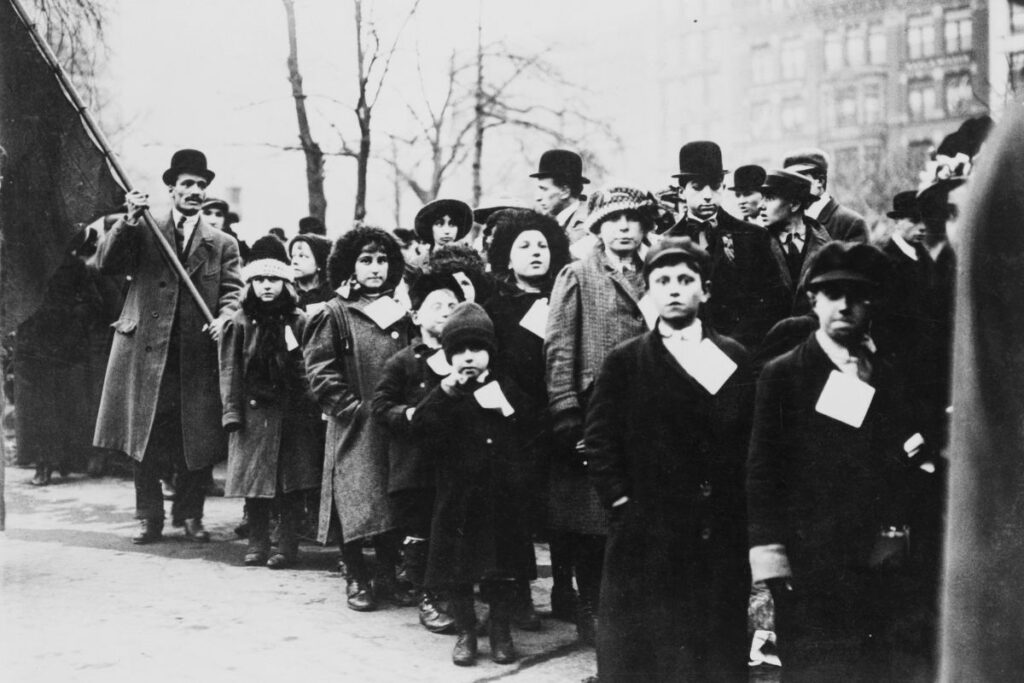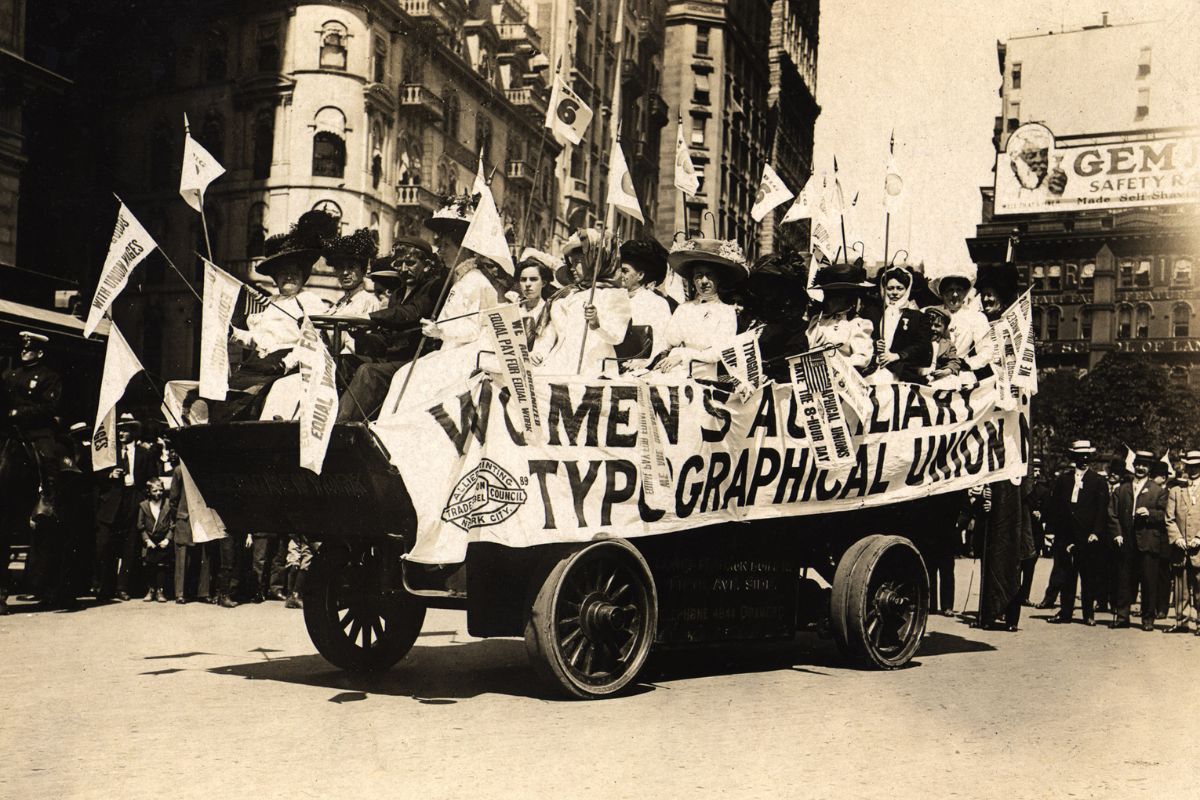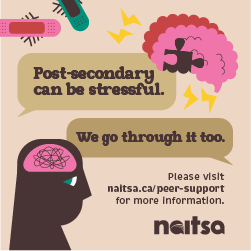Even though the term negotiation was coined around the 15th century, I am pretty sure kids are being hard-balled into doing chores ever since apes started talking. Today, negotiation, bargaining and mediation are all highly valuable skills. Harvard Law has a whole consortium about it. The meanings of these terms have had a long history of evolution instilled by events such as the labour movement. According to Oxford Languages, negotiation means “discussion aimed at reaching an agreement.”
Collective bargaining—the practice of negotiation between employers and workers—is a more recent pursuit. Its roots are found in the Industrial Revolution with the practice eventually being termed in 1891. Bargaining isn’t exclusive to worker unions. Today collective bargaining is most commonly associated with workers, but group negotiation is much more fundamental. It is the winner of contracts, the resolver of conflicts and a core step in reaching decisions.
The bargaining table
Today, collective bargaining is an art of negotiation, the crux of expressing and listening. Unions and workers will have a collective agreement—a document that outlines the conditions and terms of employment. That document will have a set term; when it expires, collective bargaining begins. The bargaining unit, made up of select employees in the same union, will send a notice of bargain to their employer.
Each party presents their proposals, called “tabling,” outlining the changes each party wants to make to the agreement already in place. Today, agreements are forward-looking. They tend to focus on future conditions, things like wage increases based on inflation for the next five years. If both parties cannot agree, there are two options: arbitration and conciliation.

Many unions typically try to avoid arbitration, because that moves the decision out of the bargaining process and puts it in the hands of a third-party arbitrator. That third-party board will form a report that makes the new collective agreement, and it’s binding. So even if either side doesn’t like it, they’re stuck with it.
On the other hand, the conciliation process involves recommendations by a Public Interest Commission (PIC) that hears the arguments of both sides. They’ll go to court, each side will share their opinions, and the PIC will make recommendations on how to proceed. However, if neither side wants to take these recommendations, the failure of conciliation gives unions the legal right to strike.
Strike action is perhaps the most widely known aspect of collective bargaining, where workers stop performing non-essential services as a protest. We’re seeing that with Canada Post and the Canadian Union of Postal workers right now.
The art of bargaining
A union is a continuous organization; it isn’t just formed to negotiate agreements and then disbanded. And collective bargaining is more than just a battle on two sides, it’s collaborative problem-solving. It’s almost an art form. It’s the process of giving and taking while trying to avoid deadlocks (where both parties cannot come to an agreement). Both parties have a mutually interdependent continuous relationship and at the same time, both parties want to protect their interests.
A “my way or the highway” attitude doesn’t work in collective bargaining, because deadlocks can lead to potentially more unfavourable results for the parties (through arbitration). Bargaining units must learn the power of refusal without being rude, and how best to persuade varies from negotiator to negotiator.
The history of unions
There’s no way the entirety of the labour movement can be captured in an article or even a book for that matter, but I’ll try my best. The Industrial Revolution was a sign of the Capitalist tendencies of the world. It was a time of innovation and exploitation. In an age of mechanization of factories, machines were turned into workers, and workers were treated as machines. To humble this capitalist storm, workers manifested a sort of socialist sentiment—one that argued for justice, which prompted equality for the community that called for shared well-being. Stemmed from individual struggles and unified into common aspirations, the labour movement became the realization both on the parts of business owners and workers that workers deserve rights.
Workers empowered unions and unions empowered workers and these views spread across borders and waters. Collective bargaining also became collective belongingness. Workers began to be identified as the working class and the middle class. This was a revolution, which initially was abrupt and certainly wasn’t free of violence. Unionization was frowned upon by the companies, and workers were harassed for unionizing. Eventually, the anger of workers would erupt in the form of union violence. After many struggles, unions increased their political influence and secured the right to unionize and peaceful collective bargaining became the way.
Pros and cons of unions
Unions have had a huge impact on our society. The basic rights you can’t imagine not having as a worker today—those didn’t exist without unions. We can thank unions for social security, the right to unionize, a world more sensitive to justice and equality, discussion and democratic participation and the right to be heard among countless other rights. Unions fought, directly and indirectly, to establish these as a natural state of work. They didn’t win these just for their members or their industry; their victories travelled beyond.

Unions are often criticized for suppressing innovation, but that’s not entirely true. Rather, they enabled it by creating the space for it. People had the time and spirit to innovate because they weren’t fighting with management or being exploited. Today, unions are needed as much as ever. More direly in some countries than others, but as long as there will be workers there will be a need for unions.
But there are cons to unions. Overall, unions are on the decline and some sigh good riddance. In 2022, NPR shared that only one in 10 Americans were part of a union. And Canada has seen similar trends. Some experts argue that it’s increasingly difficult to start a union, especially in areas with skilled labour, while others say that automation is partly to blame.
And of course, some people advise to just pay your workers fairly to avoid the need for unions.
It’s also easy to find those who would argue that unions are political. There are often several ‘unions’ within the union with different member affiliations and leaders of these groups cut each others’ legs like politicians to win elections. Groupism and debate within unions is not necessarily a bad thing—unless it stifles individual voices in the name of the unionist.
Union leaders are also in a position of power, and there are many examples of powerful efforts made towards corruption. Union leaders have an almost unparalleled persuasion over the union and leaders colluding with management is not unheard of.
Worker complacency is another issue. Many unionized workers become complacent because of the protection they have, and there might be rivalries between the unionized and non-unionized employees.






